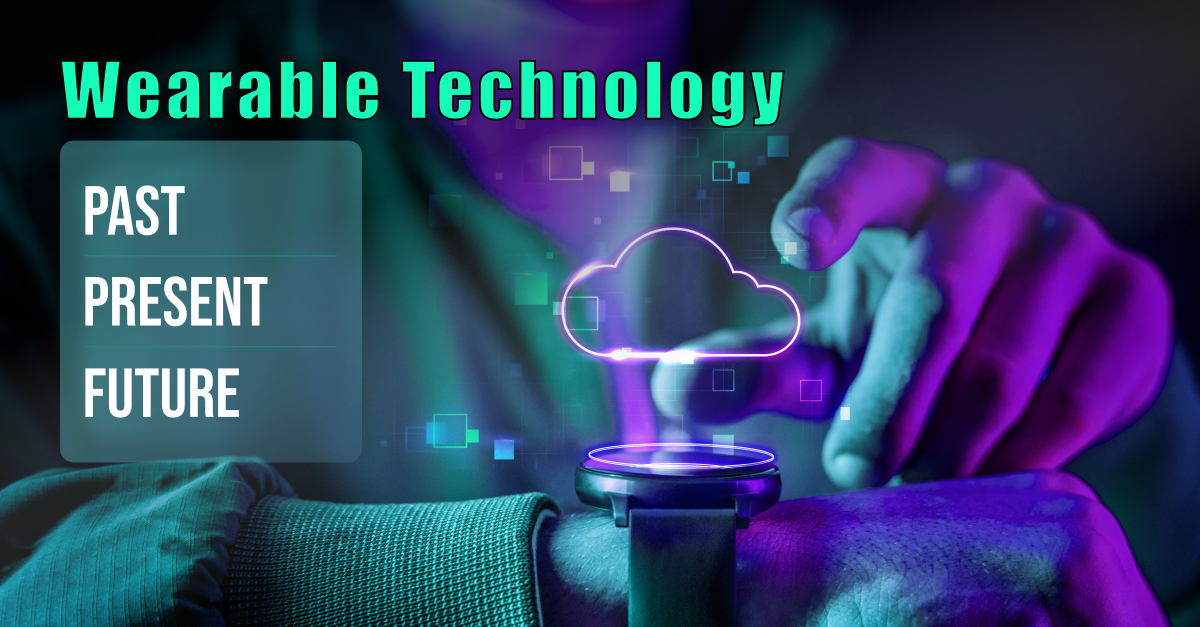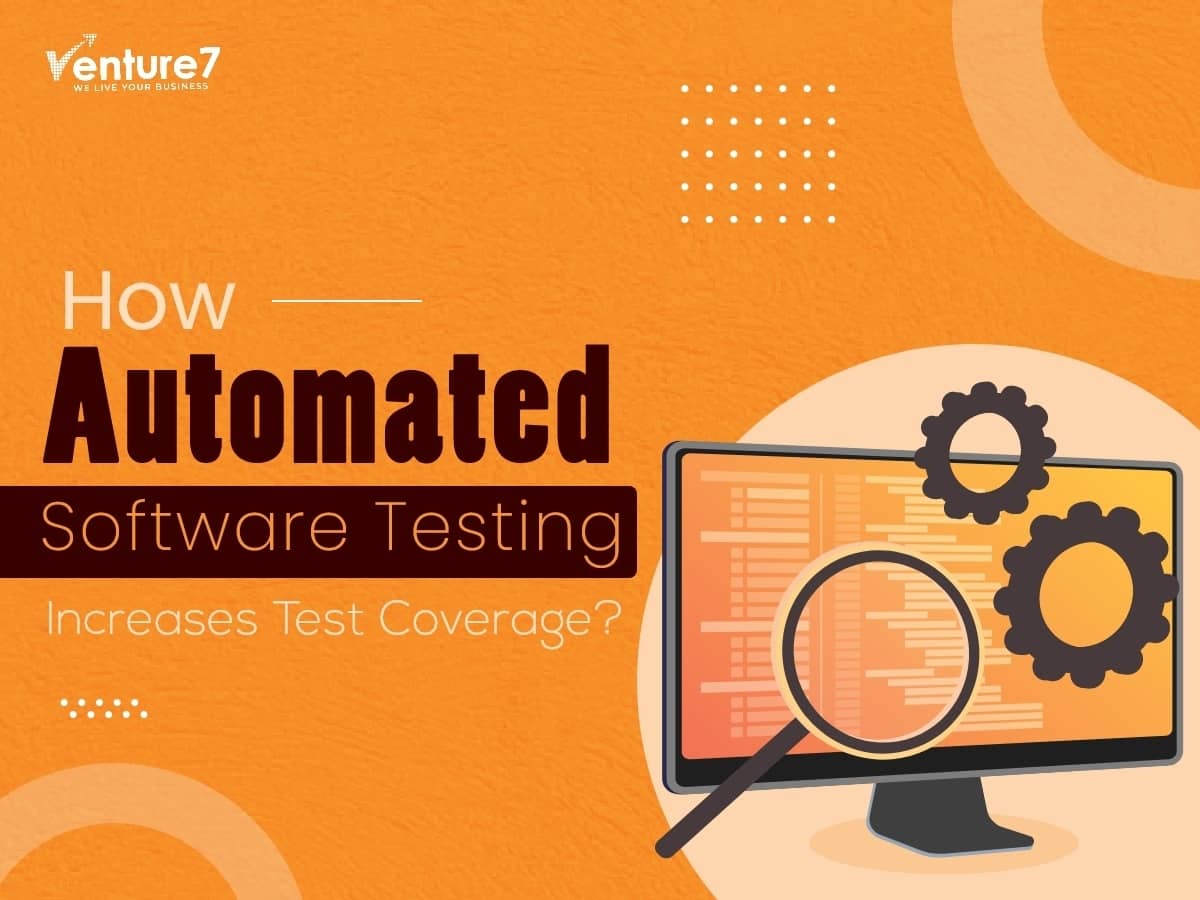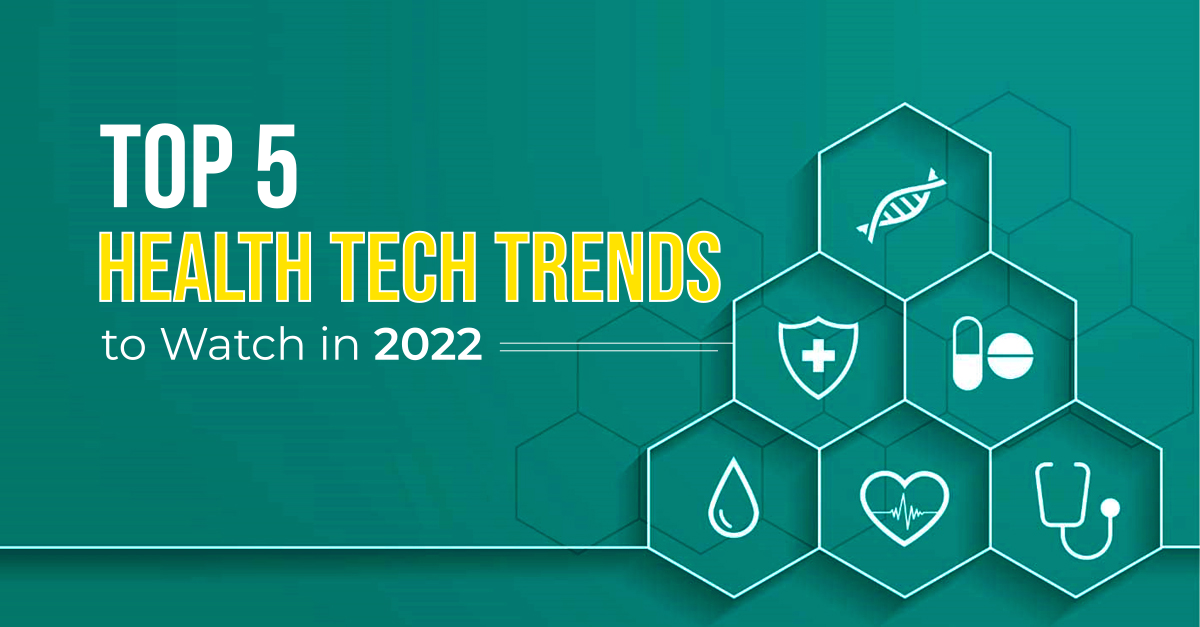Wearable Technology: Past, Present and Future
 The Healthtech sector has grown exponentially in the past few years. Among various new devices and tools that have been built, wearable technology has been the most impactful for healthcare. There has been a steady rise in digital wellness wearable devices that are designed to collect data in real-time, providing information on wellness parameters of the human body. Wearables are small but powerful electronic devices that measure after coming in contact with your body, heart rate, blood oxygen saturation, temperature, blood pressure, breathing rate, physical movement, number of steps taken, and various other health parameters. Rising demand for wearables Ever since the COVID-19 pandemic began, there has been a sharp spike in the demand for wearables globally. Especially in the US, 54% of US adults have started using digital wearables for monitoring at least one crucial health metric such as heart rate, pulse, blood pressure, etc. 2020, compared to 42% in 2019. In addition to this, compared to USD 18.4 billion in 2020, the global wearable devices market is poised to reach $46.6 billion by 2025.
The Healthtech sector has grown exponentially in the past few years. Among various new devices and tools that have been built, wearable technology has been the most impactful for healthcare. There has been a steady rise in digital wellness wearable devices that are designed to collect data in real-time, providing information on wellness parameters of the human body. Wearables are small but powerful electronic devices that measure after coming in contact with your body, heart rate, blood oxygen saturation, temperature, blood pressure, breathing rate, physical movement, number of steps taken, and various other health parameters. Rising demand for wearables Ever since the COVID-19 pandemic began, there has been a sharp spike in the demand for wearables globally. Especially in the US, 54% of US adults have started using digital wearables for monitoring at least one crucial health metric such as heart rate, pulse, blood pressure, etc. 2020, compared to 42% in 2019. In addition to this, compared to USD 18.4 billion in 2020, the global wearable devices market is poised to reach $46.6 billion by 2025.Wearables in the past
If we look back, historically, eyeglasses, invented in the 13th century were the first wearable devices. Several hundred years later wearable pocket watches transformed into wristwatches which, in turn, became smart health tracking watches due to digital transformation. Wearable devices are powerful tools in modern healthcare for patients as they are personal and present everywhere the patient goes. For the critically ill or the elderly, specialized wearable devices such as biosensors track infection, inflammation, cognitive decline, etc. Especially for those living alone, digital health devices detect fall incidents and trigger alerts to caregivers, saving vital time. Health monitoring devices such as wearable ECG monitors and blood pressure monitors track vital parameters like blood pressure and heart function which can contribute significantly to lowering in-clinic visits and hospitalizations. In terms of self-care for users, they help track their daily wellbeing which is of utmost importance because most diseases like hypertension, diabetes, and heart ailments are caused by a lifetime of unhealthy habits.How wearables have impacted our lives at present
At present, digital health monitoring devices, therapeutic devices, and activity trackers are the other categories of wearables that are being rapidly adopted. Therapeutic devices monitor patient metrics in real-time which aids in disease therapy, recovery from an ailment, and facilitates the delivery of therapy. These devices are usually categorized into pain management devices, rehabilitation devices, insulin pumps, and respiratory therapy devices. Activity trackers, on the other hand, were not intended for specialized medical use initially. But now, modern activity tracking devices offer precise features and capabilities to monitor vital signs. Consider your everyday modern smartwatch. It is a small but potent tool that can facilitate the management of cardiovascular diseases. The watch band contains a cuff that inflates to capture systolic and diastolic pressure, using the same principle as your typical blood pressure monitor. The data collected from the device is synced with an associated digital health app on your smartphone and analyzed for important insights into your heart health.What does the future hold?
Two years into the pandemic, digitization in terms of telehealth and wearables have become a critical part of remote healthcare monitoring and is likely to continue being a reliable and viable alternative for caregivers, providers, and patients. In the future, we foresee that the growth of wearable devices combined with a deficient supply of skilled caregivers will create the need for improved automatic, real-time customized designs for care in place. Wearables will contribute to the management of chronic illness care, surgical outcomes, post-discharge care, neurology, and emotional well-being. For the wearable devices industry, the way forward is to shift to more personalized care that enables patients to engage in their self-care, facilitates better support from caregivers for their loved ones, and above all allows leeway to healthcare providers to provide timely interventions with better utilization if their scarce manpower resources at lower costs. Venture 7 is at the forefront of this digital transformation where wearable digital health devices are rapidly transforming healthcare.
Browse by categories
- Agile
- Artificial Intelligence
- Automated testing
- Big Data
- Blockchain
- Business Intelligence
- Chatbots
- Cloud Computing
- Customer Experience
- Data Science
- Design Thinking
- DevOps
- Dialogflow
- Digital transformation
- EduTech
- ETL
- Healthcare
- HealthTech
- Machine Learning
- Mobile application
- Product Development
- Quality Ascent
- Quality Assurance
- Real Estate
- Software Testing
- StartUp
- Testing
You May Like This

How Does Data Warehousing Improves Customer Relationship Management?
Customer Relationship Management (CRM) is an important aspect and holds an integral position in every organization. It refers to an approach that involves various strategies and technologies to manage and analyze a company’s interaction with its customers. This is necessary to build a strong customer service relationship and customer retention, thereby, driving more sales. Industries […]

How Automated Software Testing Increases Test Coverage?
Software testing refers to an investigation or a process to evaluate the quality of a software product or application, and check whether the developed product has met the set standards by identifying the defects to ensure the quality of the product. The process involves execution of system components to evaluate the applications and meet the […]

How AI-Based Chatbot Meet User Requests?
The way people converse with brands and clients have seen a revolutionary shift in recent years. The conversations are being digitized through various messaging applications and other advanced technologies. The use of AI-based chatbots are growing at a rapid pace, making it a trend with each passing day. The business grows when their customers are satisfied […]

Importance of Drones in Real Estate
Real estate has been growing enormously and marketing in this sector is one of the most difficult aspects due to high edged competition. This makes it necessary to introduce new technology which can pave the way of continuous growth and profit in real estate industry. The real estate sector is shifting towards the use of […]

Top 5 Health Tech Trends to Watch in 2022
The coronavirus pandemic has vividly transformed the way healthcare is practiced globally. Technology in healthcare is crucial to balance the multiple challenges within the healthcare industry and maintain robust healthcare facilities while providing medical services. Global healthcare experts have identified the top five health tech trends to watch for in 2022. These latest technologies within the […]

How Is RPA Contributing To Manufacturing Industry
The manufacturing industry involves both front and back-end processes that need to be balanced as per the new regulations and situations. This industry needs constant innovation and seamless communication to carry out the process in an efficient manner. This industry is rapidly shifting towards the use of advanced technologies to carry out the process seamlessly […]



